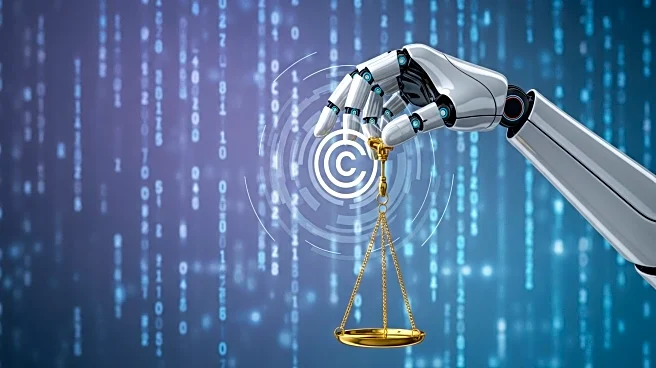What is the story about?
What's Happening?
Tech companies are lobbying the government to allow them to use creative and journalistic works to train their AI large language models without facing copyright restrictions. These companies argue that such exemptions are necessary to unlock the economic potential of artificial intelligence. However, this push has sparked backlash from creatives and journalists who are concerned about the implications for their intellectual property rights. The debate centers on the balance between fostering innovation in AI and protecting the rights of content creators. Bridie Jabour, along with editor Lenore Taylor and deputy editor Patrick Keneally, discussed the need for regulatory frameworks to address these challenges and the potential threat AI poses to journalism.
Why It's Important?
The push for AI regulation exemptions by tech companies highlights a significant tension between technological advancement and intellectual property rights. If granted, these exemptions could accelerate AI development and its integration into various sectors, potentially boosting economic growth. However, they also raise ethical and legal concerns about the protection of creative works and the sustainability of journalism. The outcome of this debate could have far-reaching implications for the media industry, content creators, and the broader economy, influencing how AI technologies are developed and deployed in the future.
Beyond the Headlines
The discussion around AI regulation and copyright exemptions touches on broader ethical and cultural issues. The potential for AI to disrupt traditional media and creative industries raises questions about the future of work, the value of human creativity, and the role of technology in society. As AI continues to evolve, there is a need for comprehensive policies that balance innovation with the protection of individual rights and cultural heritage. This ongoing debate may also influence public perception of AI and its role in shaping the future.
AI Generated Content
Do you find this article useful?
















